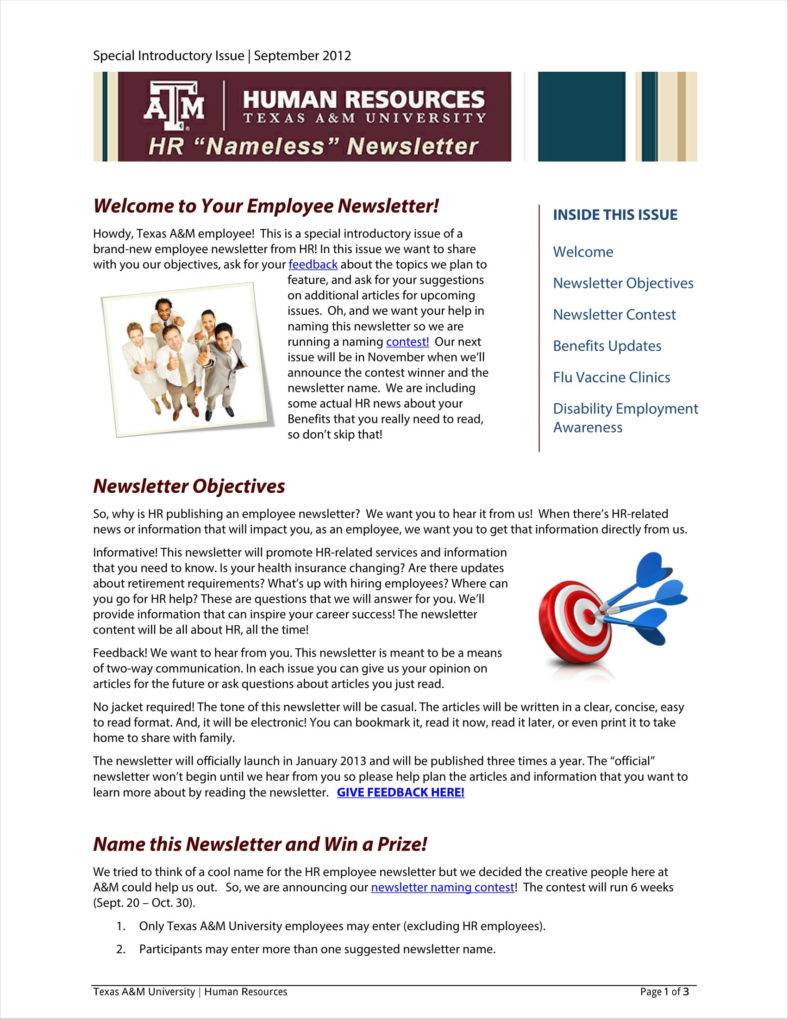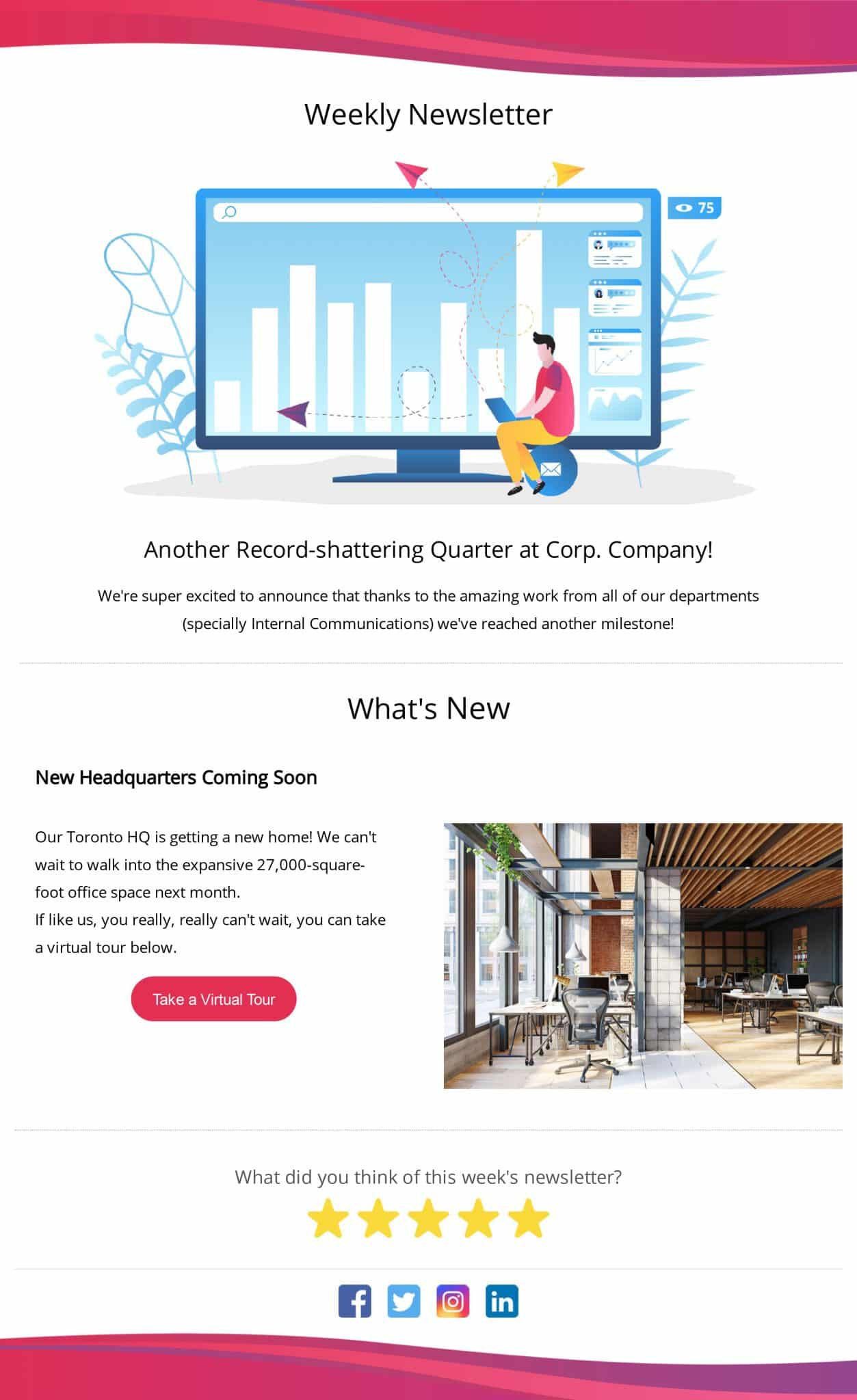

The HTML emails were properly coded - this simply seemed to be an indicator of preference. Even though respondents to a survey from HubSpot claimed that a HTML-rich email is preferable to a plain text email, every time plain text and HTML emails were A/B tested the plain text version saw higher open rates and click through rates. However, don’t count out a traditional plain text email format. Including a relevant photo like a candid of employees working on a new project contextualizes each story. Most modern employee newsletter templates structure content around visuals and graphics. Adjust your design choices based on the feedback you receive. Include questions like “Is this newsletter too short, too long, or just right?” Ask what types of content employees want to see, and what format they prefer. Questions can be utilitarian - “Where would you like the company picnic to be this year?” - and they can be creative - “If your department had an animated mascot, what would they be?” Making your employee newsletter interactive will optimize open rate and read rate. Seeking employee feedback and allowing them to make company decisions transforms a newsletter from a bulletin to an actionable task on their agenda. Use Google Forms to attach a survey to an employee newsletter. Solicit FeedbackĬonsider your employee newsletter a living, breathing organism - with the right care it can constantly grow! A great way to convince employees to take a few minutes out of their day to read your newsletter is to request feedback or ask a question at the end of your newsletter. Consider your target audience - your employees - and what they would respond to.

Attempts to write irreverent, humorous newsletters can turn off employees if the quality is not consistent.Īnd beyond the word play and pop culture references, remember that your top priority is to inform your employees about company news. Some company cultures will naturally lend themselves to casual and humorous newsletters, but properly vet your writer before committing to a distinct and colorful voice. You do not have to sacrifice professionalism in order to write content your employees will love to read. Think of a successful employee newsletter like a TED Talk - even when the foremost experts in their field give a presentation they are warm, engaging, and relatable. Even an organization with a professional, formal persona can use language that connects with readers and tells a story.

#BEST EMPLOYEE NEWSLETTERS FULL#
Include links to longer feature stories after the blurb so employees have the option to circle back and read them in full later. That way readers can know what new positions are available, when the holiday picnic is happening, and how the rollout of your new product is going in less than a minute. One way to guarantee that the relevant recipients read each story is to write a headline and a short blurb that’s no more than three short sentences. If you are composing newsletters for an organization with hundreds (or thousands) of employees, you may have ten full stories or more to include in your newsletter. The wordier your email, the less likely your employees with a full workload will have time to digest the information.

Here are a few tips for making an employee newsletter they actually look forward to. Get your teams’ attention and elevate your newsletter from uninspired to an engrossing read. Enticing employees to read through to the end – or even open the email in the first place – is easier said than done.Īccording to the Washington Post, most corporate employees spend way too much time checking their email, and your busy employees will be tempted to skip the newsletter altogether if it isn’t engaging. Combining important updates with motivational bits of company culture, the best employee newsletters communicate pertinent information in a digestible way. Employee newsletters send through email are a golden opportunity to get everyone in your organization on the same page.


 0 kommentar(er)
0 kommentar(er)
